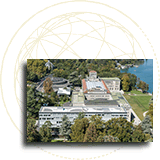The aim of this Part is to review the terms on which applicants have acceded to the WTO. The WTO Agreement simply provides that a State or separate customs territory possessing full autonomy in the conduct of its external commercial relations and of the other matters provided for in this Agreement and the Multilateral Trade Agreements may accede “on terms to be agreed between it and the WTO”107. The terms of accession are contained in the Protocols annexed to the Reports of accession Working Parties. The documents containing the text of the Reports are listed in Annex 5. Footnotes cite the new Members concerned. These are arranged in the reverse order of accession, i.e. they cite first the applicant to have acceded more recently. This method has been adopted because, on the whole, more recent accessions are a better guide to current practice than earlier accessions. The footnotes also refer to the relevant paragraphs in these Reports and the annexed accession Protocols.
WTO Members each have different obligations. Article XII does not explain the terms on which applicants may be invited to accede. One reason for its lack of specificity is that the terms of accession are different in each case also because each acceding government negotiates its own unique concessions on customs duties, commitments on agricultural support and export subsidies and specific commitments on its services regime on the basis of its national measures.108 A second reason is that the drafters of Article XXXIII of GATT 1947, on which WTO Article XII is based, saw the need to provide flexibility to ensure that the terms provided for a balance of advantage. One point that they had very much in mind is that GATT 1947 was based on the assumption that its Members had, by and large, free market economies and that while access to their markets was governed by the measures dealt with in its agreements (for instance, tariffs, quantitative restrictions, etc. in the goods area), access to the markets of applicants which did not necessarily have free market economies might be regulated by government decision. This point is equally valid for the WTO; Article XII adopts the same approach to accession as the corresponding provision of GATT 1947. The fact that terms of accession are not defined in advance preserves the right of Members to adapt the terms to the circumstances of each case.
WTO Members active in accession Working Parties have confirmed that, because each acceder has its own unique features, its commitments should be agreed on a case-by-case basis. However, an examination of the terms shows that certain patterns do emerge. This Part examines the subjects dealt with in the Reports of Accession Working Parties, picks out patterns where they exist and identifies other commitments undertaken by the new Members.
Each of the Accession Protocols makes the applicant a Member of the WTO with all the rights and obligations this entails, including those contained in its Protocol of Accession, which is an integral part of the WTO Agreement. The new Member therefore has an obligation to abide by the rules on goods, services and the trade-related aspects of intellectual property rights of the WTO Agreement. A list of the subjects covered by the Marrakesh Agreement Establishing the WTO is reproduced in Annex 11.
Each new Member also agrees to abide by its own Protocol commitments which are either contained in the Protocol itself or set out in the body of its Report and incorporated by reference in the Protocol.109 In addition, its concessions and commitments on goods and services are contained in the Goods and Services Schedules, both of which are annexed to the Protocol and form an integral part of it.
The following sections of this Handbook examine each of the main subjects dealt with in the Reports of Accession Working Parties and the Protocol commitments entered into. Working Party Reports have been organized under the following main headings:
- introduction;
- economic policies;
- framework for making and enforcing policies;
- policies affecting trade in goods;
- trade-related intellectual property regime;
- policies affecting trade in services;
- transparency;
- trade agreements; and
- conclusions.
These main headings are usually divided into sub-sections. The normal pattern is that each of the Report’s sub-sections deals first with the factual information collected on the acceding country’s policies; second with the questions addressed to the acceding country by members of the Working Party; third with discussions that have taken place on the terms to be offered to the applicant; and finally, the Protocol commitments accepted by the applicant on the specific rules and disciplines of the WTO in question. The concluding section of each adopted Report recommends that the applicant be invited to accede to the WTO under the provisions of Article XII and forwards texts of a Draft Decision and Protocol of Accession to the Ministerial Conference/General Council for action. Annexes to the Report contain the draft Goods Schedule and Services Schedule. A tabular presentation showing the main subjects dealt with in the Working Parties and the commitments undertaken by acceders is reproduced in Annex 12.
The last sections of the Handbook analyse the commitments that acceders have undertaken in their Schedules of Concessions and Commitments on Goods and Schedules of Specific Commitments on Services.
Before examining individual subjects, mention is made of some of the more general points that have been raised in the discussions on accession that have taken place in the General Council/Ministerial Conference or in individual Working Parties.
Notes:
107. Article XII of the Agreement Establishing the
WTO. back to text
108. Members of the member States of the European Communities are an exception to this rule.
back to text
109. For the text of the Protocols, see Annex 10.2.
back to text
